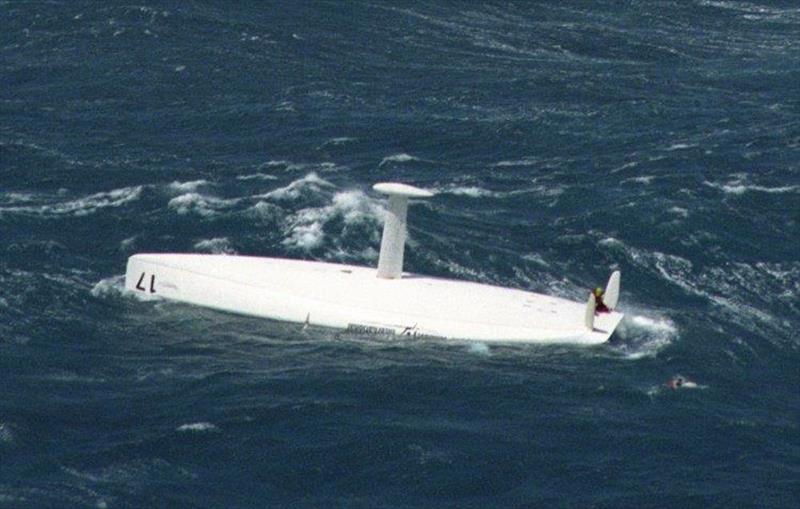
Global Solo Challenge - Can yachts capsize in mountainous seas and high winds?
by Dave Proctor 31 May 2022 19:13 NZST

Can yachts capsize? © Global Solo Challenge
When researching the attributes of the yachts entered into the Global Solo Challenge (GSC) and the possibility of them capsizing and whether they would self-right, one of the first pieces of advice I found was, that you should not go sailing in inclement weather, particularly when there are high winds and large waves.
Now I am sure the skippers on the GSC will be keen to heed this advice, but something tells me that, as they sail their way around the world, they may encounter some pretty horrible conditions. Let's try to break down this topic in very simple terms and language.
To understand whether a yacht will capsize and self-right it is firstly important to understand some of the basic physics involved.
What stops a yacht from capsizing in 'normal' conditions is that a yacht has a keel to keep it upright and also provide lateral resistance to stop the boat drifting sideways in the water. The keel contains ballast which gives the boat a lower centre of gravity.
Now you would expect to see any sailing boat heeling over in a reasonable wind, but what you should also be aware of is that as the boat heels the pressure on the sail decreases. A simple experiment to show this effect is, that if you were to take a sheet of plywood and hold it vertically with the wind on the main area, you will feel the force of the wind. If you then leant the board backwards at 45% the wind pressure would be a lot less.
Also, when a boat is heeled over, the ballast in the lowest part of the boat exerts more downward force. An experiment to show this would be if you were to grab a weight in your hand with your arm extended downwards you would feel the gravitational pull. If you were to hold your arm straight out in front of you, still holding that weight, then there would be a lot greater force on your arm pulling the weight down.
So as the boat heels over, there is less pressure for it to continue to fall into the water and more pressure for it to return to upright.
Now, without going too deep into the dynamics of yacht design, all boats will have an individual Angle of Vanishing Stability (AVS). This is the angle beyond which a boat will not self-right.
Because of the low centre of gravity and design, an ocean-going yacht would be expected to have an AVS of between 130 and 140 degrees from vertical.
Now that means, the mast of a yacht could be pointing downward into the sea between 4 and 5 o'clock, and the boat would still self-right to a vertical position. When a boat heels to 90 degrees and puts the mast in the water without capsizing we call this a knock-down.
If the boat goes beyond this point, then the yacht will invert and with no other movement become stable in the upside-down position.
However, a boat will often capsize in rough conditions, and if a wave were to rock the boat so that the angle of the boat goes below the AVS then the boat will again self-right. Very often, but not always, the mast snaps during the 360 roll.
In the case of a capsize, a major problem that can occur, aside from the likely dismasting, is water flooding the hull and the boat could partially or totally sink. This is why the organisers of the GSC have specified that the partaking yachts must have waterproof sectional bulkheads, so that any boat that does capsize, will not become totally flooded and sink.
This is a very brief article on a highly complex issue, but I am sure you agree that it shows why sailing boats can perform as they do and why a capsize, with the loss of a boat, during the GSC, will hopefully be an unlikely event which however skippers need to prepare for.
You can read more about watertight bulheads on this page and you can refer to a very interesting article by Proboat. On the topic of stability you will find very detailed information in this article by Marine Marsh Design and I recommend the reading of this article by Gerr Marine.